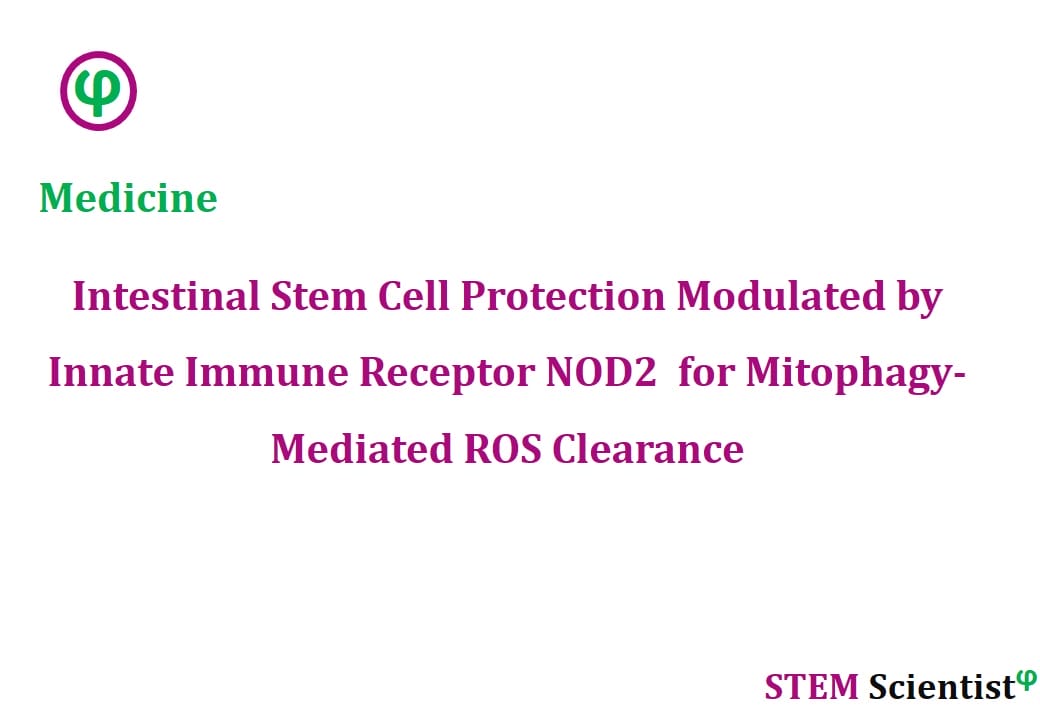
The following study was conducted by Scientists from Institut Pasteur, INSERM, Paris; Université Paris-Saclay, Villejuif; Université Paris Sud; Université Paris-Saclay, Le Kremlin-Bicêtre; Université Paris Diderot Paris 7; Collège de France, Paris, France; Washington University School of Medicine, St. Louis, USA. Study is published in Proceedings of the National Academy of Sciences Journal as detailed below.
Proceedings of the National Academy of Sciences (2020); 117(4): 1994-2003
Innate Immune Receptor NOD2 Mediates LGR5+ Intestinal Stem Cell Protection Against ROS Cytotoxicity via Mitophagy Stimulation
Significance
The intestinal epithelium represents the most vigorously renewing adult tissue in mammals. The renewal process is supported by the presence of intestinal stem cells (ISCs). Here we decipher a pathway of ISC cytoprotection mediated by a microbiota-derived product, the muramyl dipeptide (MDP). During stress conditions, recognition of MDP by the cytosolic sensor NOD2, which is expressed at high levels in ISCs, mediates the clearance of lethal excess of ROS molecules. The coordinated action of the autophagic protein ATG16L1 and NOD2 mediates the activation of a mitophagic process to eliminate damaged mitochondria and therefore protection of ISCs. We show a link between mitophagy-mediated ROS clearance and bacterial MDP stimulation in ISCs, therefore elucidating a role of the microbiota in epithelial regeneration.
Abstract
The nucleotide-binding oligomerization domain-containing protein 2 (NOD2) agonist muramyl dipeptide (MDP), a peptidoglycan motif common to all bacteria, supports leucine-rich repeat-containing G protein-coupled receptor 5 (LGR5)+ intestinal stem cell (ISC) survival through NOD2 activation upon an otherwise lethal oxidative stress-mediated signal. However, the underlying protective mechanisms remain unknown. Here, using irradiation as stressor and primarily murine-derived intestinal organoids as a model system, we show that MDP induced a significant reduction of total and mitochondrial reactive oxygen species (ROS) within ISCs, which was associated with mitophagy induction. ATG16L1 knockout (KO) and NOD2 KO organoids did not benefit from the MDP-induced cytoprotection. We confirmed the MDP-dependent induction of ISC mitophagy upon stress in vivo. These findings elucidate the NOD2-mediated mechanism of cytoprotection involving the clearance of the lethal excess of ROS molecules through mitophagy, triggered by the coordinated activation of NOD2 and ATG16L1 by a nuclear factor κB (NF-κB)-independent pathway.
Source:
Proceedings of the National Academy of Sciences
URL: https://www.pnas.org/content/117/4/1994
Citation:
Levy, A., A. Stedman, et al. (2020). “Innate immune receptor NOD2 mediates LGR5+ intestinal stem cell protection against ROS cytotoxicity via mitophagy stimulation.” Proceedings of the National Academy of Sciences 117(4): 1994-2003.


